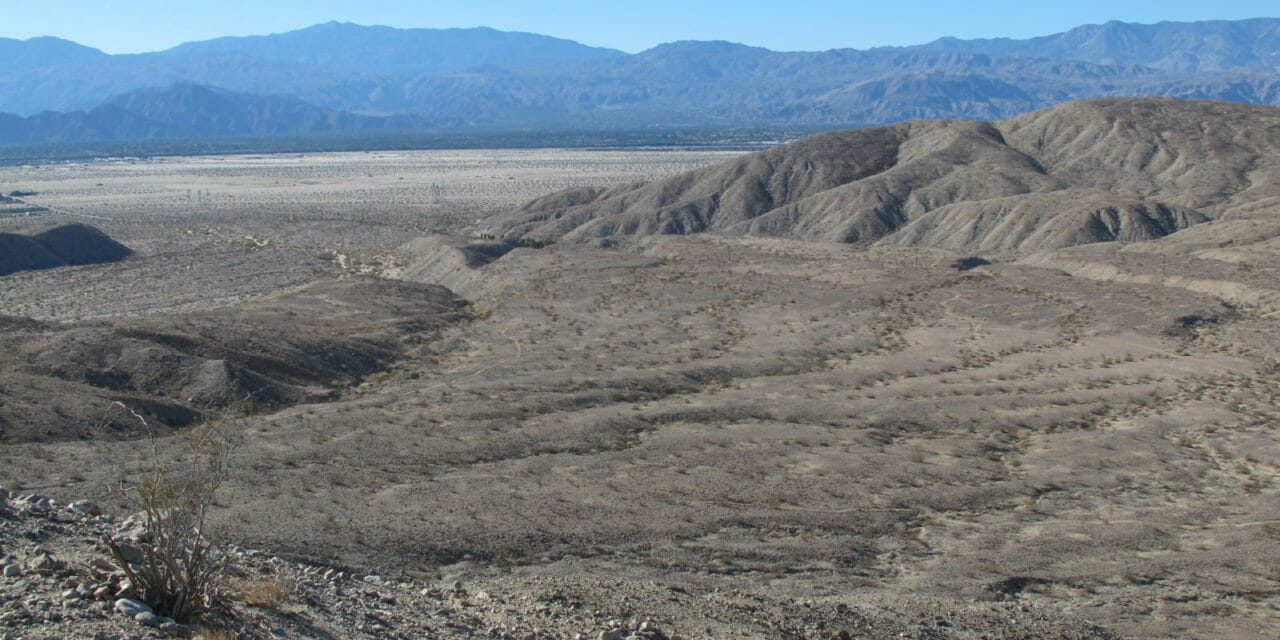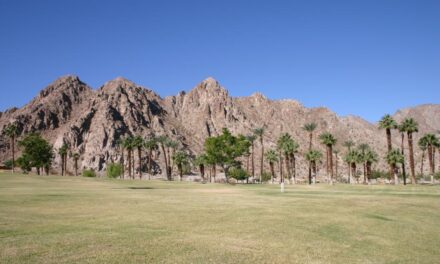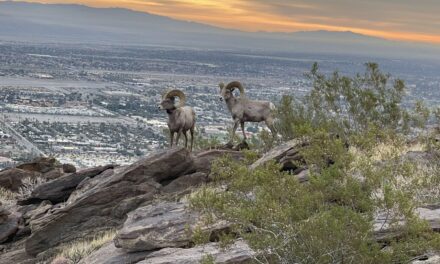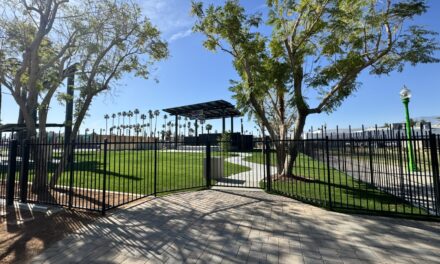Day hikers can head to a desert oasis, with a good chance of spotting the endangered fringe-toed lizard, on the Pushawalla Palms Loop.
The trail runs 3.25-miles round trip through the Coachella Valley Preserve, which protects 17,000 acres in the Indio Hills. Several palms groves can be found in the preserve, including the well-known Thousand Palms Oasis.
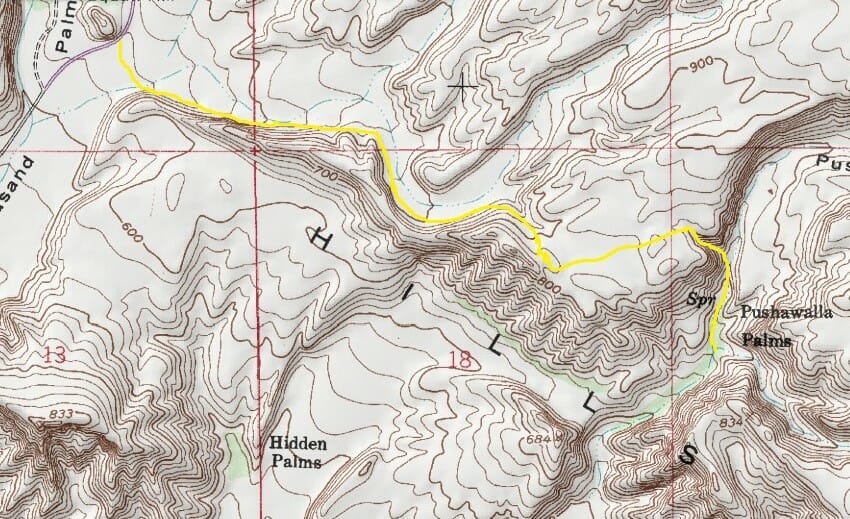
Pushawalla Palms Oasis Trail topo map
To reach the trailhead, from Interstate 10 take the Ramon Road exit east through Thousand Palms. Once past town, turn left/north onto the aptly named Thousand Palms Canyon Road. In 1.5 miles, look for a dirt turnout off the road’s right/east side and park there. The sandy trail runs roughly southeast from the lot.
Several tiny washes cut through this stretch of desert. Along the way, you may spot fringe-toed lizards. Beige in color, they blend in almost perfectly with the sand and may not be seen unless one moves or you’re almost on top of it. They are so named because elongated scales on the sides of their hind toes allow them to maintain traction on the loose sand and to run at a fast clip rather than sink.
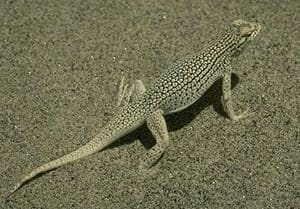
En route, you may spot the endangered Coachella Valley Fringe-toed Lizard, which is found only in the Coachella Valley.
Those aren’t the only adaptations that ensure these bug-eaters survive the harsh desert. To keep out blowing sand, they can close their nostrils and shut flaps against their ear openings when they scamper. Their upper and lower eyelids feature interlocking scales, and the upper jaw overlaps the lower one.
While fringe-toed lizards are found across Southern California, Arizona and northwest Mexico, one subspecies—the Coachella Valley fringe-toed lizard, Uma inornata—is endemic to the Palm Springs area and the preserve.
In about 400 feet, the trail reaches and climbs a small hill. Watch for a sign at the top that shows the trail going left.
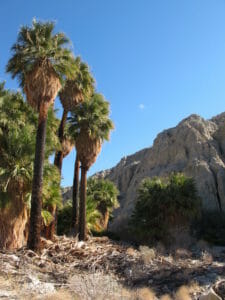
The Pushawalla Palms Oasis is just one of several in the Coachella Valley Preserve.
This section of the hike follows the uplifted side of the Mission Creek Fault for about 0.95 miles. The Mission Creek, which branches off the San Andreas, is an example of a right-lateral strike-slip fault. In short, the earth on the two sides of the fault line are moving laterally in opposite directions without one side rising or dropping much in elevation. In Mission Creek’s case, the south side of the fault is shifting to the northwest while the north side is moving to the southeast; if you stood on either side of the fault, geographical features like washes and rock formations would appear to have been displaced to the right rather than lining up with their counterparts behind you.
Mission Creek and the Banning Fault farther east are the two major strands of the San Andreas in the Coachella Valley. The two strands merge in Desert Hot Springs. The upshot on everyday life is during earthquakes the loose sediment accumulated near the Mission Creek fault typically amplifies seismic waves, increasing the amount of shaking that occurs in southwestern Desert Hot Springs and the rest of the northern part of the Coachella Valley, according to a 2009 study.
The trail next cuts northeast across the desert. In 0.28 miles, it reaches the top of a draw that heads into a canyon where the Pushawalla Palms Oasis is located. Follow the draw for 0.15 miles into the canyon.
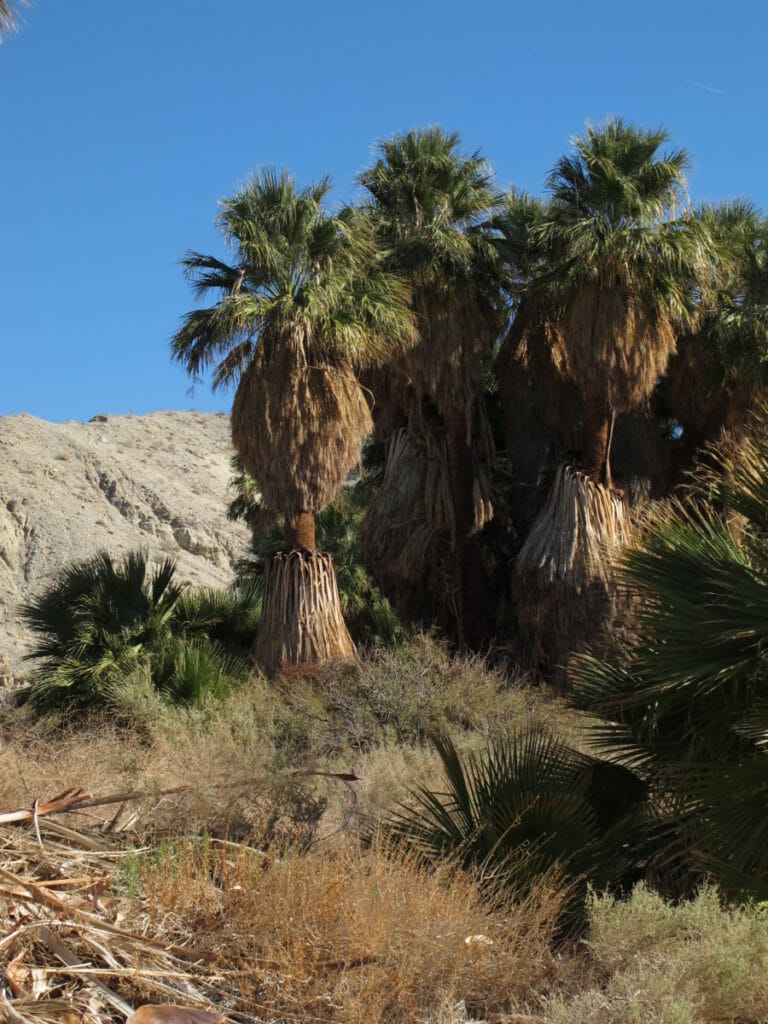
Spring water bubbling up along the fault feeds the Pushawalla Palms Oasis.
Once at the bottom, turn right/south to the oasis. The palm grove, which stretches for about 0.15 miles, is fed by spring water bubbling up thanks to the fault line. There are spots in the grove where you’ll be able to walk without having the sun beat down on you. The cliff’s soft sediment rising beyond the grove makes for dramatic scenery, especially in the hours before sunset.
Once you’ve taken in the sights, retrace your steps back to the parking lot.
As virtually all of the trail is in the open desert, you’ll want to carry plenty of water and don sunhat and sunscreen. Hiking boots are a must to cross the sandy washes and negotiate the short but rocky cliffsides.

